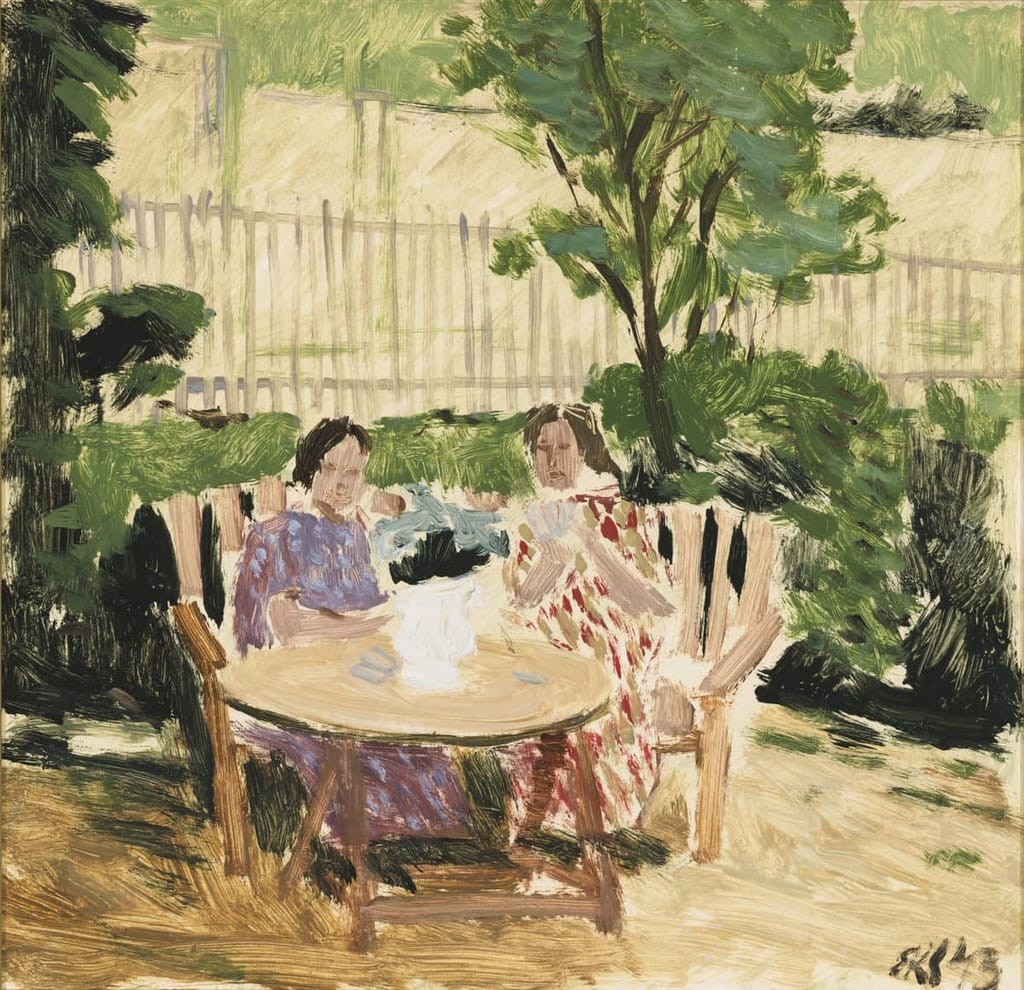
Endel Kõks had just completed his studies at Pallas Art School by 1943 and thus his more extensive presentation to the public took place in wartime. He also quickly achieved success. Critics were appreciative of his strong colouring and refined taste. Since Kõks left Estonia in 1944, then those four to five years in which he worked intensively form the first and also a separate period in Kõks’s creative work, to which an organic continuation did not follow in his life in exile. Then Kõks’s style changed decisively and quite quickly. He worked profusely in 1942-1944. At least 81 works are known from this period according to Kaalu Kirme (2007), yet over 100 works are enumerated already in the catalogue of an exhibition that was held in 1969.
Key words like intellectual, rich colouring, impressionism, and Frenchness are used to describe Kõks’s work of that period. His circle of themes was quite broad at that time since Kõks also experimented, yet he mostly depicted various café scenes, garden and park idylls. He is also known to have painted urban views, portraits and figurative paintings (among other things about the life of coastal dwellers). Several repetitions of the subject used for In the Garden are known from the same year. In wartime conditions,
Kõks often used small formats. The use of pasteboard or plywood as base material was also frequent.
Kõks displayed about 60 of his works in November of 1943 at an antique store in Tartu and it is possible that this work was part of that exposition. Among other things, the following is written in the notice of the exhibition on 27 November in the Postimees newspaper: “A sales exhibition of works by painter Endel Kõks was opened on 18 November at the Kunst ja Raamat (Art and Book) antique store located at Town Hall Square. /.../ About 60 of the artist’s works from the last few years are on display at this sales exhibition of Kõks’s works, which will be open until 30 November. The rather narrow rooms of the store have limited the display to mostly smaller oil paintings and studies of the artist’s many technically varying creative styles, where alongside landscapes, figurative scenes dominate, but flowers are also found in many different settings. /.../ This entire exhibition, however, points out Kõks’s intellectual nature as a painter and his diligence that is constantly maturing in the tension of new quests, the best products of which we admire or review at our general art exhibitions.”